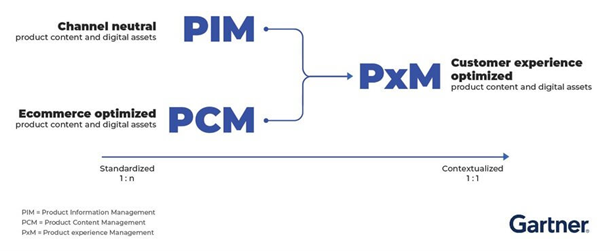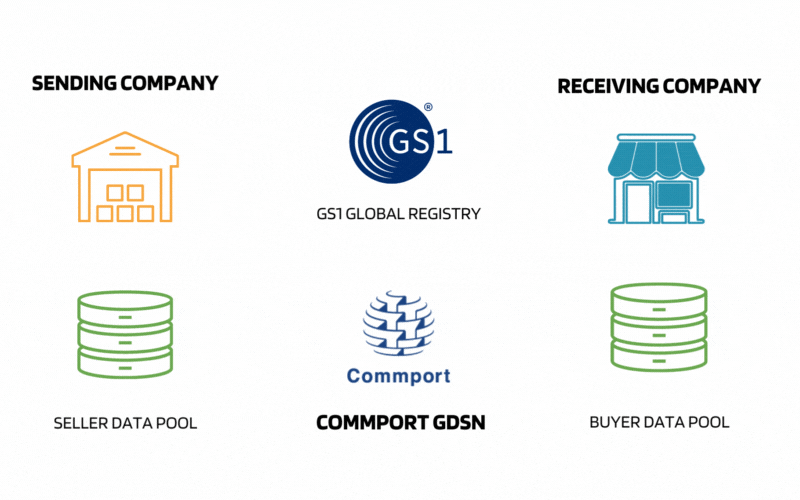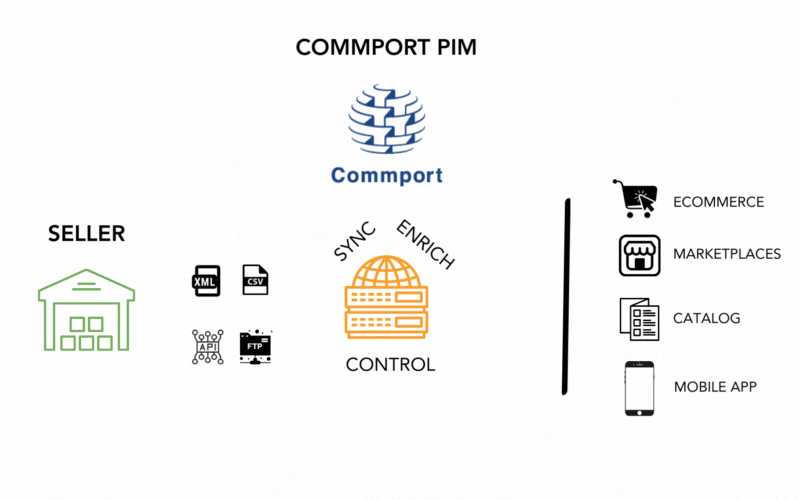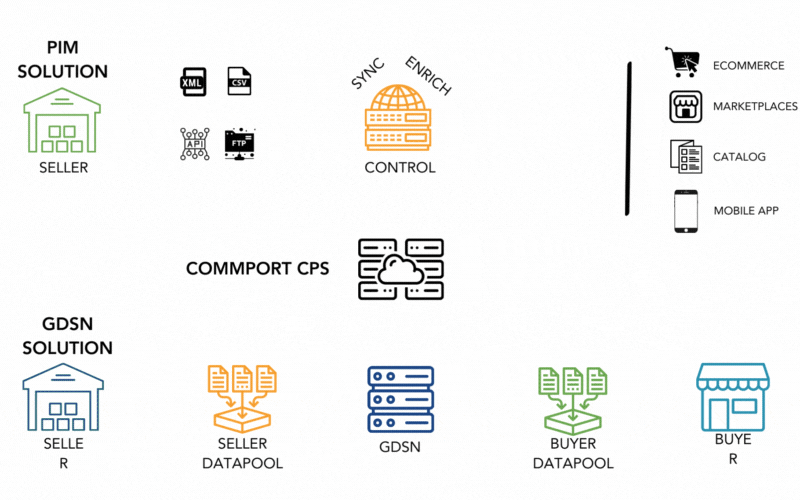Product Experience Management (PXM) is a strategic approach that delivers consistent and personalized product experiences across all customer touchpoints.

In this in depth guide, we’ll dive deep into the world of Product Experience Management, exploring
what it is,
why it matters,
and how you can harness its power to maximize your brand’s success.
We’ll cover everything from understanding your target audience and crafting compelling product stories, to optimizing digital touchpoints and analyzing customer feedback.
With the rise of e-commerce, consumers have more options than ever before, and their expectations are higher than ever. They demand seamless, immersive experiences that not only meet their needs but also exceed their expectations. To succeed in this landscape, businesses must embrace Product Experience Management as a strategic imperative.
Whether you’re a small business owner or a large enterprise, this guide will provide you with the insights, tools, and strategies you need to take your brand to new heights.
Get ready to transform your product experience and drive your brand’s success like never before.
In this chapter, we will go through the history of product experience management solution
We will also cover the definition of product experience management, and learn about its importance in the modern business world.
Then, in later chapters, we’ll cover how to choose the right PXM solution, its benefits, and future trends.

The concept of Product Experience Management (PXM) has evolved significantly over the past few decades. Initially, businesses focused on traditional Product Information Management (PIM) to handle product data. This approach was primarily driven by maintaining consistent and accurate product information across various channels. However, as the retail landscape became more complex and digitalization took center stage, the need for a more dynamic and customer-centric approach emerged. This led to the evolution of PXM.
PXM is an extension of PIM, incorporating not just the management of product data but also the enhancement of the product experience across multiple touchpoints. The rise of e-commerce, mobile shopping, and omnichannel retailing demanded that businesses not only provide accurate product information but also deliver a compelling and consistent experience that resonates with consumers. This shift marked the beginning of PXM, where the focus moved from merely managing data to curating and optimizing product experiences.
Product Experience Management (PXM) is a strategic approach that focuses on delivering consistent and personalized product experiences across all customer touchpoints. It involves managing, curating, and optimizing product data to ensure that consumers receive the right information, in the right context, and at the right time.
PXM goes beyond traditional PIM by incorporating aspects such as customer insights, content syndication, and multichannel delivery to enhance the overall product experience.
In today’s competitive marketplace, where consumers have access to a plethora of options, PXM plays a crucial role in differentiating brands. It ensures that the product information is not only accurate but also engaging and tailored to the preferences and needs of the target audience. By leveraging PXM, businesses can create a seamless shopping experience that builds trust and drives conversions
The importance of Product Experience Management cannot be overstated in the current retail environment. With the proliferation of online and offline channels, consumers expect a consistent and personalized experience regardless of where they interact with a product. PXM enables businesses to meet these expectations by providing tools and strategies to manage and optimize product information across all channels.
Effective PXM can have a profound impact on a brand’s success. By creating a cohesive and compelling product experience, businesses can foster deeper connections with their customers, increase brand loyalty, and drive higher customer lifetime value.
A strong product experience can have a positive impact on a brand’s bottom line. Customers who are satisfied with the overall experience are more likely to make repeat purchases, recommend the product to others, and be willing to pay a premium price. This translates into increased revenue, market share, and profitability for the brand.
Enhanced Customer Experience: PXM ensures that customers receive accurate, relevant, and engaging product information, leading to a better overall shopping experience.
Increased Conversion Rates: By delivering personalized and contextually relevant product experiences, PXM helps increase conversion rates and drive sales.
Brand Consistency: PXM helps maintain brand consistency across all channels, ensuring that the product information aligns with the brand’s identity and values.
Efficient Content Syndication: PXM allows businesses to efficiently syndicate product content across multiple marketplaces, both online and offline, ensuring a unified product experience
Ultimately, PXM is not just a nice-to-have – it’s a strategic imperative for brands that want to thrive in today’s competitive landscape. By investing in the creation and optimization of exceptional product experiences, businesses can set themselves apart, build lasting relationships with their customers, and achieve long-term success.

PIM (Product Information Management) and PxM (Product Experience Management) are two interconnected concepts essential for modern commerce. While they are distinct, they work together to create a seamless and engaging customer experience.
PIM: The Foundation
Focus: Centralized management of product data.
Function: Collects, organizes, and enriches product information.
Outcome: Accurate and consistent product data across channels.
PxM: The Experience Layer
Focus: Optimizing product content for different channels and audiences.
Function: Creates engaging product experiences through personalization and storytelling.
Outcome: Increased customer engagement, conversions, and brand loyalty.
How they relate:
PIM provides the raw materials for PxM to work its magic.
PxM leverages PIM data to create tailored experiences.
Together, they drive sales and customer satisfaction.
Think of it like this: PIM is the backstage crew, ensuring all product information is accurate and accessible. PxM is the front-stage performer, using that information to create a captivating show for customers.
In essence, PIM is the foundation, and PxM is the building that creates the ultimate customer experience
In this chapter, we will go through information related to
How to Syndicate Product Content to Multiple Marketplaces?
Understand target audience
and much more
We will also cover the list of marketplaces where you can sync your product data to.

In today’s omnichannel retail environment, syndicating product content across multiple marketplaces is crucial for maintaining consistency and reaching a broader audience.
However, this process can be complex, especially when dealing with numerous platforms, each with its unique requirements and formats. Product Experience Management (PXM) simplifies this process by automating content syndication and ensuring that product information is consistent, accurate, and engaging across all channels.
The very first step before syndicating your product content to marketplaces is to understand your target audience and their needs.
At the heart of any successful PXM strategy is a deep understanding of your target audience and their evolving needs. This involves conducting comprehensive market research, gathering customer feedback, and analyzing user behavior to uncover valuable insights.
Begin by defining your target customer personas in detail. Who are they? What are their pain points, goals, and expectations? What are their preferred channels and touchpoints for engaging with your brand and product? Understanding the nuances of your target audience will allow you to tailor the product experience to their specific needs and preferences.
Next, gather feedback from your existing customers through various channels, such as surveys, interviews, and online reviews. Pay close attention to their pain points, frustrations, and suggestions for improvement. This feedback can help you identify areas of the product experience that need to be optimized or redesigned.
Additionally, analyze customer data and user behavior to gain a deeper understanding of how your target audience interacts with your product. Leverage tools like web analytics, customer relationship management (CRM) systems, and user testing to uncover patterns, trends, and pain points. This data-driven approach will enable you to make informed decisions about enhancing the product experience.
By continuously gathering and analyzing customer insights, you can stay ahead of evolving market demands and ensure that your product experience remains relevant, engaging, and tailored to the needs of your target audience. This customer-centric mindset is the foundation for building a successful PXM strategy.
People often get confused between GDSN, PIM, and PXM.
Understanding the differences between the Global Data Synchronization Network (GDSN), Product Information Management (PIM), and Product Experience Management (PXM) is essential for businesses looking to optimize their product data strategies.
GDSN: The Global Data Synchronization Network is a network of interconnected data pools that allows businesses to exchange product information globally in a standardized format. GDSN ensures that product data is accurate, up-to-date, and compliant with global standards, making it essential for businesses operating in international markets. For more insights into GDSN, explore Commport’s GDSN services.
PIM: Product Information Management focuses on the centralized management of product data, including descriptions, specifications, images, and other content. PIM solutions enable businesses to maintain a single source of truth for product information, which can be easily updated and distributed across various channels. Learn more about the benefits of PIM solutions through this guide.
PXM: While PIM is about managing product data, PXM goes a step further by optimizing and personalizing that data for different customer touchpoints. PXM integrates customer insights and context-specific content to deliver a tailored product experience across all channels.
Each of these solutions plays a crucial role in the product data ecosystem, and businesses often benefit from using them in tandem to achieve comprehensive data management and product experience optimization
Whether a business needs a PXM solution depends on several factors, including the complexity of its product portfolio, the number of sales channels it operates in, and the importance of delivering a consistent product experience. Here are some indicators that a PXM solution might be necessary:
Multiple Sales Channels: If a business sells its products across various online marketplaces, physical stores, and digital platforms, a PXM solution can help manage and synchronize product information across these channels.
Large Product Catalog: Managing a vast range of products with varying specifications, images, and descriptions can be challenging. A PXM solution streamlines this process by centralizing and automating the management of product data.
Need for Personalization: Today’s consumers expect personalized experiences. A PXM solution allows businesses to tailor product content based on customer preferences, improving engagement and conversion rates.
Global Reach: For businesses operating in multiple regions, a PXM solution can help localize product information to meet the needs of different markets, languages, and cultural contexts.
A PXM solution is particularly beneficial for businesses aiming to enhance their omnichannel strategy, ensuring that product information is consistently delivered and optimized across all touchpoints.
Developing a comprehensive and effective PXM strategy requires a multi-faceted approach that addresses several key elements. Here are some of the crucial components that businesses should consider:
The foundation of any successful PXM strategy is a deep understanding of your target audience. This involves conducting market research, gathering customer feedback, and analyzing user behavior to identify their pain points, preferences, and expectations.
Ensuring a consistent brand identity and messaging across all touchpoints is essential for creating a cohesive and memorable product experience. This includes everything from the product’s visual design and packaging to the tone of voice used in customer interactions.
Today’s customers expect a seamless experience as they move between different channels and devices. PXM requires a well-coordinated approach that integrates all digital and physical touchpoints, allowing customers to engage with the brand and product in a frictionless manner.
Leveraging data and technology, businesses can tailor the product experience to individual customer needs and preferences. This could involve personalized product recommendations, customizable features, or even the ability to co-create the product.
PXM is an ongoing process, not a one-time initiative. Businesses should continuously gather feedback, analyze data, and make iterative improvements to the product experience based on customer insights and changing market demands.
Effective PXM often requires cross-functional collaboration between teams, including product development, marketing, customer service, and data analytics. By breaking down silos and aligning on a shared vision, businesses can deliver a cohesive and exceptional product experience.
Effective product content is a critical component of a successful product experience management strategy. The way you present and communicate information about your product can have a significant impact on customer engagement, purchase decisions, and overall brand perception.
Craft detailed and engaging product descriptions that highlight the key features, benefits, and unique selling points. Use clear, concise language and incorporate relevant keywords to improve search engine visibility.
Invest in high-quality product images and videos that showcase the product from multiple angles and in various usage scenarios. This can help customers visualize the product and better understand its features and capabilities.
Ensure that all product-related content, including technical specifications, user manuals, and FAQs, is easily accessible and presented in a clear, user-friendly manner. This can help customers make informed purchasing decisions and reduce the likelihood of post-purchase frustration.
Maintain a consistent brand voice, tone, and visual identity across all product content, from the website to packaging and marketing materials. This helps reinforce your brand’s identity and creates a cohesive product experience.
Leverage customer data and user behavior insights to personalize the product content based on individual preferences and browsing history. This can include tailored product recommendations, relevant cross-sells and upsells, and contextual content that addresses specific customer needs.
Ensure that your product content is optimized for search engine visibility, making it easy for customers to find and discover your products. This includes incorporating relevant keywords, implementing structured data, and creating a user-friendly product taxonomy.
Regularly gather customer feedback and analyze user behavior to identify areas for improvement in your product content. Use this information to make iterative updates and enhancements, ensuring that your content remains relevant, engaging, and effective.
Automation is a key advantage of using a PXM solution for product content syndication. With numerous channels and marketplaces requiring updated and consistent product information, manual syndication can be time-consuming and error-prone. A PXM solution automates this process, ensuring that product content is correctly formatted, personalized, and distributed to all relevant channels.
PXM solutions centralize product data, making it easier to update and manage content. Changes made in the central database are automatically reflected across all connected channels.
PXM solutions allow businesses to tailor product content for specific channels, taking into account the unique requirements and audience preferences of each platform.
Automated syndication ensures that any changes in product information are immediately updated across all channels, reducing the risk of inconsistencies and outdated information.
PXM solutions ensure that product content meets the compliance standards of different marketplaces, reducing the risk of errors and rejections.
To meet the demands of modern-day customers.
Leverage customer data and user behavior insights to personalize the product content based on individual preferences and browsing history. This can include tailored product recommendations, relevant cross-sells and upsells, and contextual content that addresses specific customer needs.
Ensure that your product content is optimized for search engine visibility, making it easy for customers to find and discover your products. This includes incorporating relevant keywords, implementing structured data, and creating a user-friendly product taxonomy.
Regularly gather customer feedback and analyze user behavior to identify areas for improvement in your product content. Use this information to make iterative updates and enhancements, ensuring that your content remains relevant, engaging, and effective.
Enhancing product visualization: By seamlessly integrating accurate product specifications, captivating photos, and engaging videos, PXM creates immersive digital experiences that mirror in-store interactions. This rich visual content not only informs but also inspires customers, ensuring brand storytelling is consistent across all touchpoints.
Driving localized experiences: PXM empowers businesses to deliver tailored product information based on customer location and preferences. By dynamically adjusting content, pricing, and availability, brands can create hyper-local experiences that resonate with diverse audiences and drive conversions.
In this chapter, we will be explaining
Top benefits of product experience management
How manufacturers, suppliers, and retailers can take advantage of the solution.
Product Experience Management (PXM) offers numerous benefits for businesses, particularly in today’s fast-paced and competitive marketplace. By focusing on delivering a seamless and personalized product experience, PXM helps companies differentiate themselves, improve customer satisfaction, and drive sales. Here’s a closer look at the key benefits of implementing a PXM solution:
One of the primary advantages of PXM is the ability to create a more engaging and personalized customer experience. PXM enables businesses to tailor product content to specific customer segments, ensuring that the information resonates with the target audience. This personalization can significantly enhance the customer’s shopping journey, leading to increased satisfaction and loyalty.
For example, by using customer data and insights, a PXM solution can dynamically adjust product descriptions, images, and recommendations based on the customer’s preferences, location, and shopping behavior. This level of customization not only meets customer expectations but also drives higher engagement and conversion rates.
Managing product information across multiple channels can be a daunting task, especially when dealing with a large and diverse product catalog. PXM solutions streamline this process by centralizing product data and automating content distribution. This reduces the likelihood of errors, ensures consistency across all channels, and saves time and resources.
By automating routine tasks such as content updates and syndication, businesses can focus on more strategic initiatives, such as optimizing the product experience or exploring new markets. This efficiency is particularly valuable for companies operating in dynamic industries where product information needs to be frequently updated.
A well-executed PXM strategy can have a direct impact on sales and conversion rates. By providing customers with relevant and engaging product information at every touchpoint, businesses can guide them through the purchasing journey more effectively. This not only improves the chances of conversion but also encourages repeat purchases.
Moreover, PXM solutions enable businesses to analyze the performance of their product content and make data-driven adjustments to improve results. For instance, if certain product descriptions or images are found to be particularly effective in driving sales, these insights can be used to optimize content across the entire catalog.
Maintaining brand consistency is crucial in today’s omnichannel environment. Customers expect the same quality and tone of product information whether they are shopping online, in-store, or through a mobile app. PXM ensures that product content is aligned with the brand’s identity and values across all platforms.
By centralizing product data and controlling its distribution, PXM solutions help businesses maintain a uniform brand voice and presentation. This consistency reinforces brand recognition and trust, which are key factors in customer decision-making.
PXM solutions offer distinct advantages to manufacturers, suppliers, and retailers, each of whom plays a critical role in the product supply chain. Here’s how each of these groups can benefit from implementing a PXM strategy:
Manufacturers: For manufacturers, PXM ensures that product information is accurately conveyed to all downstream partners, including distributors, retailers, and consumers. This not only reduces the risk of errors but also enhances the product’s marketability. By providing detailed and consistent product information, manufacturers can better support their partners in selling their products.
Suppliers: Suppliers benefit from PXM by being able to manage and distribute product information more efficiently across multiple marketplaces. PXM solutions allow suppliers to quickly update product details, respond to market changes, and meet the specific requirements of different retailers. This flexibility is crucial in maintaining strong relationships with retail partners.
Retailers: Retailers use PXM to provide a seamless shopping experience across all channels. By ensuring that product information is accurate, consistent, and engaging, retailers can improve customer satisfaction and drive sales. PXM also helps retailers to manage large volumes of product data more effectively, reducing operational costs and improving overall efficiency.
For more information on how to enhance your omnichannel customer experience, consider exploring this resource on leveraging PIM for an enhanced omnichannel experience.
Delivering a consistent and seamless product experience across all touchpoints is essential for building strong brand loyalty and driving customer engagement. In today’s omnichannel landscape, customers expect a cohesive and frictionless experience as they interact with your brand and product through various channels and devices.
To achieve this, it’s crucial to map out the entire customer journey, identifying all the touchpoints where your target audience interacts with your product. This could include your website, mobile app, social media, physical retail stores, customer service, and post-purchase support. Ensure that the branding, messaging, and overall experience are consistent and aligned across these touchpoints.
Leverage technology to create a seamless and integrated experience. Invest in tools and platforms that allow you to centralize customer data, automate workflows, and deliver personalized experiences. This could involve integrating your e-commerce platform, CRM system, and marketing automation tools to provide a unified view of the customer and streamline their journey.
Additionally, consider the physical aspects of your product experience, such as packaging, labeling, and in-store displays. Ensure that these elements reinforce your brand identity and enhance the overall product experience. Collaborate with your design and production teams to create a cohesive and visually appealing product experience that resonates with your target audience.
By creating a consistent and seamless product experience across all touchpoints, you can build trust, foster brand loyalty, and create a memorable and engaging journey for your customers. This level of cohesion and integration can set your brand apart in a crowded market and drive long-term success.
To illustrate the real-world impact of effective product experience management (PXM), let’s explore a few case studies of brands that have successfully implemented PXM strategies:
Apple is renowned for its exceptional product experiences, which have been a key driver of the company’s success. By meticulously designing every aspect of the customer journey, from product design and packaging to in-store interactions and post-purchase support, Apple has created a cohesive and immersive experience that has fostered deep brand loyalty among its customers.
Apple’s attention to detail, intuitive user interfaces, and seamless integration across devices and services have been instrumental in establishing the brand as a leader in the technology industry. The company’s focus on PXM has enabled it to command premium pricing, drive higher customer lifetime value, and maintain a dominant market position.
IKEA, the global furniture retailer, has been a pioneer in leveraging PXM to enhance the customer experience. By integrating its physical stores, e-commerce platform, and mobile app, IKEA has created a seamless and engaging omnichannel experience for its customers.
From the iconic in-store experience, complete with showrooms and self-service elements, to the intuitive online shopping interface and augmented reality (AR) features that allow customers to visualize products in their homes, IKEA has consistently delivered a cohesive and innovative product experience. This has resulted in increased customer satisfaction, higher conversion rates, and stronger brand loyalty.
Sephora, the leading beauty retailer, has been at the forefront of PXM in the cosmetics industry. By leveraging data and technology, Sephora has created a highly personalized and engaging product experience for its customers.
Through its mobile app, in-store kiosks, and online platforms, Sephora provides customers with personalized product recommendations, virtual try-on features, and curated beauty content. The brand’s focus on understanding its target audience and delivering a tailored experience has led to increased customer engagement, loyalty, and sales.
Moreover, Sephora’s commitment to PXM has enabled the brand to seamlessly integrate its physical and digital touchpoints, providing customers with a cohesive and convenient shopping experience across all channels.
These case studies demonstrate how leading brands have successfully implemented PXM strategies to differentiate their offerings, build strong customer relationships, and drive long-term business success. By emulating the best practices and innovative approaches of these companies, businesses can elevate their own product experiences and achieve similar levels of success.
Here are some of the
Key Considerations When Choosing a PXM Solution
Best Practices for Successful Implementation of a Product Experience Management Solution
Selecting the right Product Experience Management (PXM) solution is crucial for businesses aiming to optimize their product content and enhance customer experience. With various options available in the market, it’s essential to consider several factors to ensure that the chosen solution meets your specific needs.
As your business grows, so will the complexity of managing product information. Ensure that the PXM solution you choose can scale with your business, accommodating an expanding product catalog, multiple channels, and global markets.
The PXM solution should seamlessly integrate with your existing systems, such as your Product Information Management (PIM), Enterprise Resource Planning (ERP), and Content Management System (CMS). Integration is critical for maintaining data consistency and streamlining workflows.
Look for a PXM solution that offers customization options to meet your unique business requirements. This includes the ability to tailor product content for different markets, customer segments, and sales channels.
The ease of use is an important factor, especially for teams that will be managing the product content. A user-friendly interface ensures that your team can efficiently navigate the system, make updates, and monitor performance without extensive training.
A robust PXM solution should provide analytics and reporting features that allow you to track the performance of your product content. These insights are invaluable for making data-driven decisions and optimizing your product experience strategy.
Consider the level of customer support and training offered by the PXM provider. Adequate support ensures that you can quickly resolve any issues and maximize the value of the solution.
For businesses looking to enhance their product syndication efforts, Commport’s Product Syndication Solution offers a comprehensive toolset designed to simplify and automate the process.
Implementing a PXM solution requires careful planning and execution to ensure its success. Here are some best practices to follow:
Define Clear Objectives: Before implementing a PXM solution, it’s crucial to define your goals. Whether it’s improving product content accuracy, enhancing customer experience, or expanding into new markets, having clear objectives will guide the implementation process.
Engage Key Stakeholders: Involve key stakeholders from different departments, such as marketing, sales, IT, and product management, in the planning and implementation phases. Their input is valuable for ensuring that the PXM solution aligns with the needs of the entire organization.
Data Quality Management: High-quality product data is the foundation of a successful PXM strategy. Ensure that your product information is accurate, consistent, and complete before migrating it to the new PXM system. Regularly auditing and updating your data is also essential for maintaining its quality.
Pilot Testing: Before rolling out the PXM solution across the entire organization, conduct a pilot test with a select group of products or channels. This allows you to identify any potential issues and make necessary adjustments before full-scale implementation.
Continuous Training and Support: Provide ongoing training and support to your team to ensure they are proficient in using the PXM solution. This is particularly important as new features are introduced or as the system is updated.
Monitor and Optimize: Once the PXM solution is in place, continuously monitor its performance. Use analytics and reporting tools to track key metrics, such as product content accuracy, customer engagement, and sales performance. Regularly optimizing your strategy based on these insights will help you maximize the benefits of the PXM solution.
Implementing a PXM solution can come with its challenges. Here are some common obstacles and strategies to overcome them:
Data Silos: Data silos can hinder the effectiveness of a PXM solution. To overcome this, ensure that all departments and systems are integrated, and that product data is centralized. This enables seamless data sharing and consistency across the organization.
Resistance to Change: Employees may be resistant to adopting a new system. Address this by providing comprehensive training and demonstrating the benefits of the PXM solution. Involving employees in the selection and implementation process can also help alleviate concerns.
Complexity of Integration: Integrating the PXM solution with existing systems can be complex. Work with experienced implementation partners who understand your business needs and can guide you through the integration process.
Ongoing Maintenance: Maintaining the PXM solution requires continuous effort, including regular data updates, system upgrades, and user training. Establishing a dedicated team or assigning specific roles can help manage these tasks effectively.
By following these best practices and addressing potential challenges, businesses can successfully implement a PXM solution that drives significant improvements in product content management and customer experience
In this chapter, we will be explaining
3 different Commport datapool solutions,
Commport’s product syndication solution offers a robust platform for automating and streamlining the syndication of product content.
Commport offers 3 different product content syndication solutions which are,

Commports GDSN (Global Data Synchronization Network) is a robust electronic solution designed to facilitate accurate and consistent exchange of product information among businesses. GDSN standards have been developed by GS1, a globally recognized standards organization, GDSN offers a standardized platform that enhances collaboration and operational efficiency among trading partners within the supply chain. GDSN is a powerful electronic solution that empowers businesses to streamline their supply chain operations, reduce errors, and improve collaboration among trading partners. By facilitating the exchange of accurate and standardized product information, GDSN enhances transparency, operational efficiency, and compliance throughout the global supply chain ecosystem. Leveraging GDSN enables businesses to optimize their supply chain.

Commport PIM (Product Information Management) is a robust software platform that centralizes and manages product data across an organization. It provides an only source of truth for product information, enabling businesses to efficiently create, enrich, and distribute consistent and accurate product data across multiple channels. Our innovative PIM solution is your gateway to perfect product management. Adopting Commport PIM enables businesses to streamline product data management, stay competitive in the market, and deliver consistent and compelling product experiences to their customers. Say farewell to the days of scattered data, inconsistencies, and missed opportunities. With Commport PIM, you can unlock the full potential of your product portfolio.

Commport CPS (Commport Product Syndication) is a Data Syndication Solution that combines GDSN (Global Data Synchronization Network) and PIM (Product Information Management) technology to enable businesses to efficiently manage and distribute product data across multiple channels. PIM solutions concentrate on centralized product information management, enrichment, and channel distribution within an organization. Whereas GDSN emphasizes the synchronization and exchange of standardized product information between trading partners, promoting consistency and accuracy across the supply chain. Depending on the specific needs and requirements of a business, they may choose to implement either PIM, GDSN, or both to effectively manage and exchange product information.
Assess Your Needs: Begin by assessing your current product data management processes and identifying areas for improvement. Determine the specific requirements for your business and the marketplaces you wish to target.
Onboard Your Data: Gather and onboard your product data into the Commport solution. This involves importing product information from your existing systems, ensuring data accuracy, and standardizing formats.
Configure the Solution: Our team will help you configure the Commport solution to match your business needs. This includes setting up data transformation rules, defining syndication workflows, and integrating with your target marketplaces.
Automate Syndication: Leverage Commport’s automation features to streamline the syndication process. Set up automated updates and real-time synchronization to ensure that your product information is always accurate and up to date across all channels.
Monitor and Optimize: Continuously monitor the performance of your product listings and optimize your syndication processes. Use analytics and reporting tools to gain insights into data accuracy, listing performance, and customer engagement.
Training and Support: Take advantage of Commport’s training and support resources to ensure that your team is fully equipped to use the solution effectively. This includes training sessions, documentation, and access to a resolute support team.
In this chapter, we will learn about retailer requirements
Future trends of Commport product syndication solution.
Retailer requirements are constantly evolving as consumer expectations shift and new technologies emerge. To stay competitive, businesses must adapt to these changes and ensure that their product information meets the latest standards. Here’s how to keep up with changing retailer requirements:
Stay informed about industry trends and changes in retailer requirements by subscribing to industry publications, attending conferences, and participating in relevant forums. Keeping up with these trends will help you anticipate changes and adapt your product information strategies accordingly.
Utilize technology solutions, such as Product Experience Management (PXM) platforms, to stay agile and responsive to changes. PXM solutions can help automate updates and ensure that your product information remains compliant with retailer requirements. Commport’s PXM solutions offer tools for managing and optimizing product content across various channels, helping you keep up with changing requirements.
Maintain open communication with your retail partners to understand their specific requirements and expectations. Regularly review their guidelines and feedback to ensure that your product information meets their standards. Establishing strong relationships with retailers can also help you stay informed about any upcoming changes.
Adopt a flexible content strategy that allows for quick updates and adjustments. A dynamic approach to managing product content ensures that you can easily accommodate changes in retailer requirements and market conditions. PXM solutions can assist in implementing such a strategy by providing tools for content customization and real-time updates.
Regularly evaluate and improve your product information management processes. Conduct audits to identify areas for improvement and implement best practices to enhance the accuracy and relevance of your product content. Continuous improvement helps ensure that your product information remains competitive and meets evolving retailer requirements.
The future of Product Experience Management (PXM) is poised to be shaped by advancements in technology, changing consumer behaviors, and the growing importance of personalized experiences. Key trends to watch for include:
Increased Automation: As technology evolves, automation in PXM solutions will become more sophisticated, streamlining content management and syndication processes further.
Greater Personalization: Future PXM solutions will offer even more advanced personalization capabilities, allowing businesses to deliver highly tailored product experiences based on deep customer insights.
Integration with Emerging Technologies: PXM solutions will increasingly integrate with emerging technologies, such as artificial intelligence (AI) and machine learning, to enhance data analysis and decision-making processes.
Enhanced Omnichannel Strategies: As the importance of omnichannel retailing grows, PXM solutions will continue to focus on providing a seamless and consistent product experience across all customer touchpoints.
By staying informed about these trends and adapting your PXM strategy accordingly, you can ensure that your business remains competitive and well-positioned for future success.
.
Product Experience Management (PXM) is a powerful approach that enables businesses to deliver consistent, engaging, and personalized product experiences across multiple channels. By implementing a robust PXM strategy and leveraging advanced solutions, businesses can enhance customer satisfaction, improve operational efficiency, and drive growth.
From choosing the right PXM solution to staying updated with changing retailer requirements, each step in the PXM journey is crucial for achieving success. By following best practices and continuously optimizing your approach, you can create a compelling product experience that resonates with consumers and sets your business apart in a competitive market.
If you have any questions or need further assistance with PXM, feel free to explore additional resources or reach out to Commport, a leader in product content management and syndication solutions.
PXM leverages customer behavior and preferences to tailor product information, creating a personalized experience. By aligning product content with customer needs, businesses can foster stronger connections and drive conversions.
PXM ensures that customers receive accurate, relevant, and visually appealing product information, enhancing their shopping experience. This leads to higher customer satisfaction, reduced returns, and increased sales.
While PIM focuses on centralizing and managing product data, PXM goes a step further by enhancing how product information is displayed to improve customer engagement and satisfaction. PXM integrates product data with customer insights to create tailored experiences.
PXM uses enriched product data, such as high-quality images, videos, detailed descriptions, pricing, customer reviews, and localized content to create an engaging product experience across platforms.